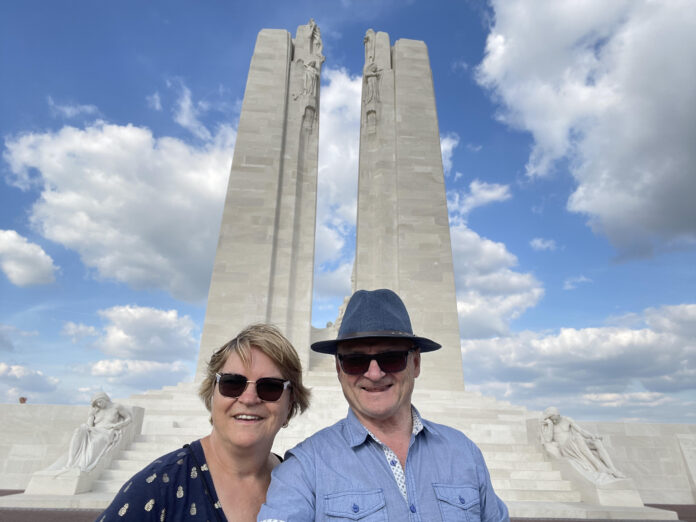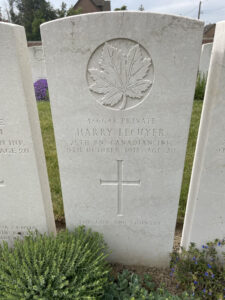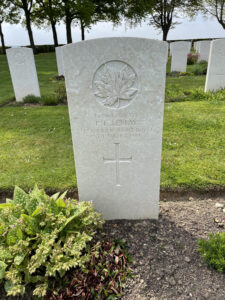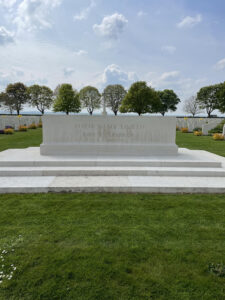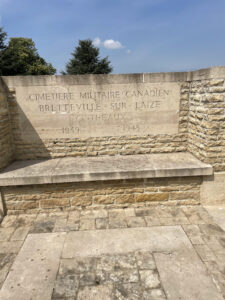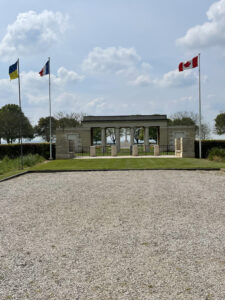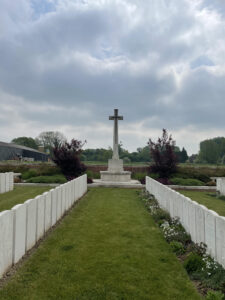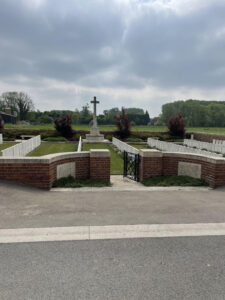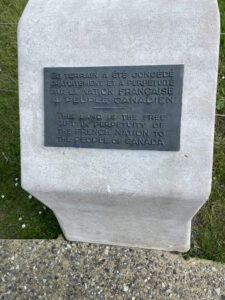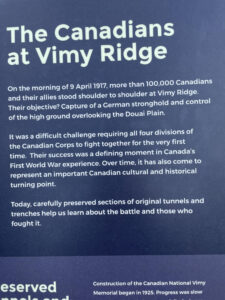An Espanola couple took a trip of a lifetime earlier this year to not only take in the beauty of Europe, but also to pay honour to some veterans from Espanola who are buried overseas.
Len and Nives Foucault of Espanola decided to travel overseas after being retired for nine years.
He says the two took I the beauty of Portugal, Spain, and France.
“We arrived in Porto, northern Portugal, on April 4 and travelled through Portugal, Spain and France returning to Porto June 4 to fly home,” recalls Len. “We had a great time and were treated very warmly in all three countries in large part because we were Canadians.
“Focusing on the smaller towns and villages we did enjoy larger sites such as the beautiful old city of Porto, the Basque city of Bilbao, Spain, in France the Palace of Versailles, Chateau Chenonceau, and Amboise where Leonardo da Vinci spent the last three years of his life. While passing through central France we visited Continvoir, the village where the Foucault family departed in 1662.”
He says besides experiencing the local culture and sites we also wanted to visit the resting places of two of our local boys.
While on the coast of Normandy we stopped to honour a local gentleman who travelled a great distance to fight to keep the world free and ended up resting in Bretteville-sur-Laize, Canadian War Cemetery, Cintheaux,” says Len. “Private Paul Emil Lemay, Espanola, of the Les Fusiliers Mont Royal was killed on August 5, 1944.
“Of the 2,871 soldiers buried there, 2,792 are Canadians with identifiable headstones, 91 who are unknown. “We signed the visitors book and noticed that the vast majority of visitors were French even though there is only one French soldier resting there,” recalls Len.
While walking to the cemetery we were greeted by a lady who welcomed us to her home for coffee and sweets. “We enjoyed the friendly chat with Eliane & Didier Gesnis and was given a WW2 Clicker as souvenir. These ‘Clickers’ were used by the allies to identify each other at night by the clicking sound they made.”
The cemetery, in the village of Calvados, is located 30 kms south of Caen, Normandy, and because it was late in the day, there was only one bus and no return. We were looking for a place to stay in Cintheaux, even though our Air B&B was paid for that night in Caen, when Eliane offered to drive us to the next village so we could catch a bus back to Caen.
The highlight of their visit was to Vimy Ridge.
“In the city of Arras, France, we rented a car and drove to a part of Canada in France, Vimy Ridge. After that famous battle, where Canada was recognized as a nation for the first time on the world stage, France donated the land to Canada in perpetuity.
“Brigadier-General A. E. Ross declared after the war, “In those few minutes I witnessed the birth of a nation.” It is a very moving place that belongs on every Canadian’s bucket list. It is one of our nation’s proudest moments and arguably our nation’s defining moment yet many of our youth are not aware of the significance of Vimy Ridge.”
A third stop was just a short drive away.
“Not far away we drove to the Ramilie British Cemetery where Private Harry Lecuyer, Espanola, Canadian Infantry, Nova Scotia Regiment, is resting. He was 20 years old when he was killed on October 9, 1918, just 32 days before the war ended.”
Len adds the trip was full of wonderful experiences and many laughs but the most enduring were the visits with two of our local fallen.
Lest We Forget


